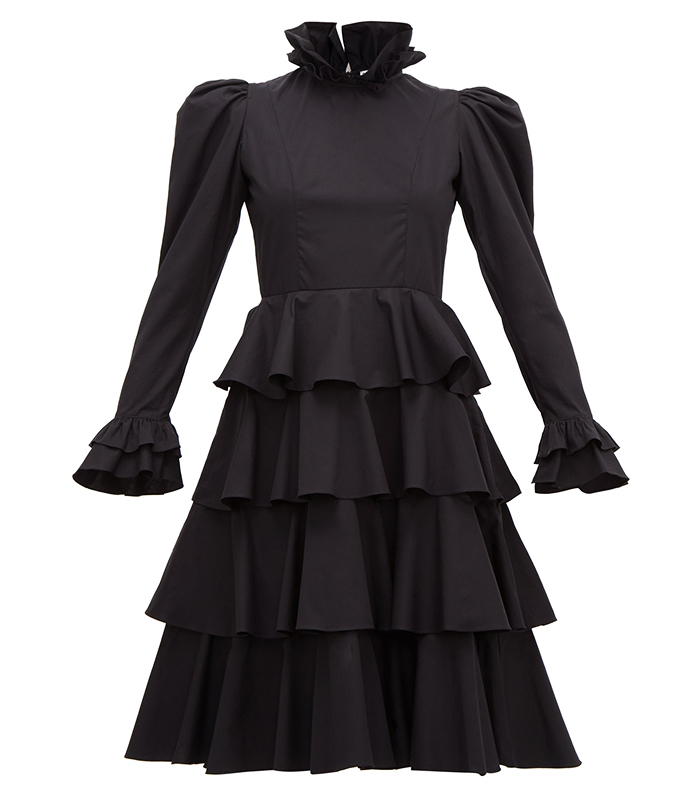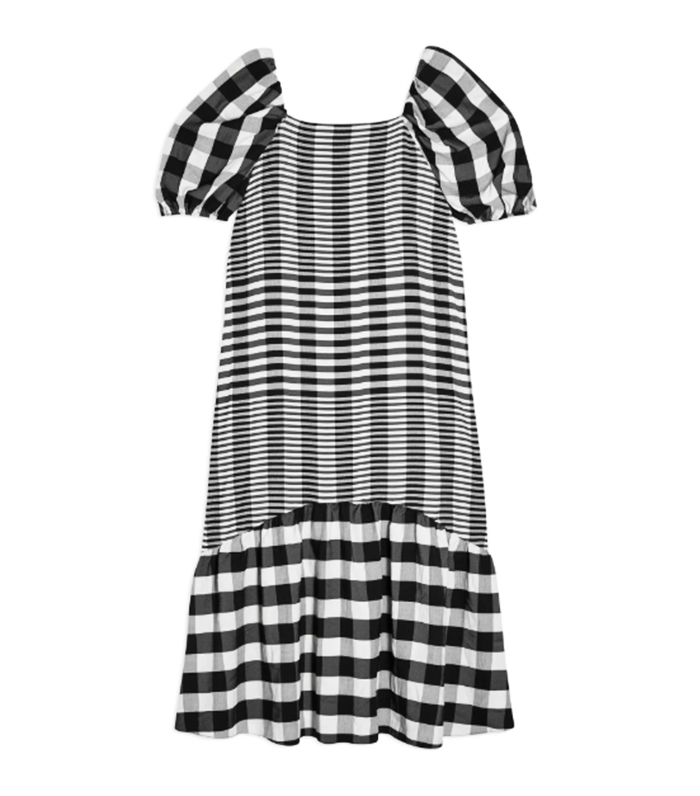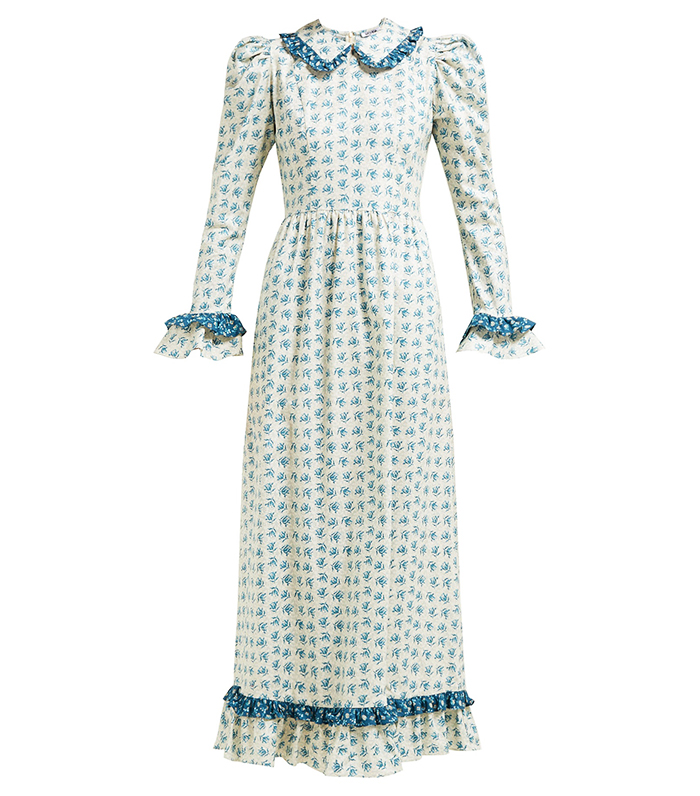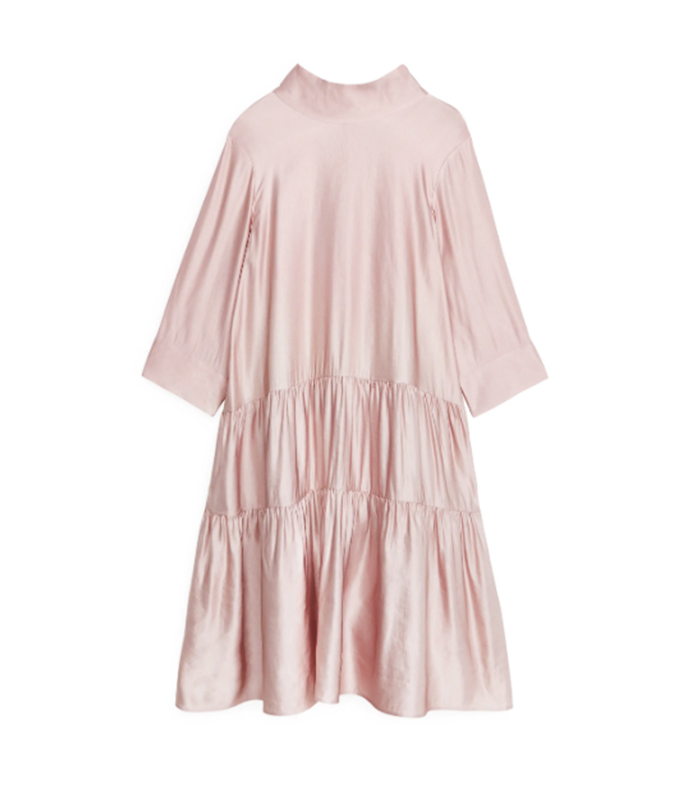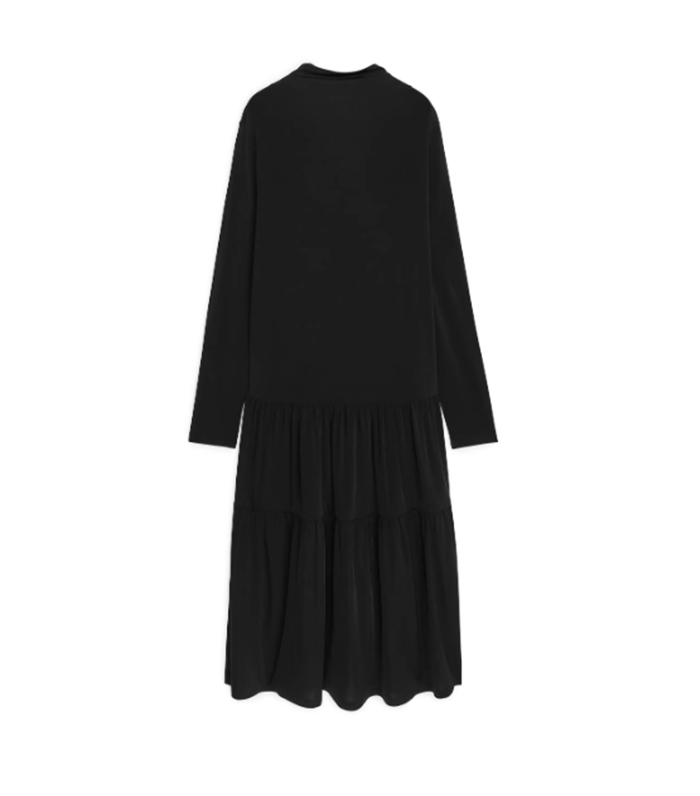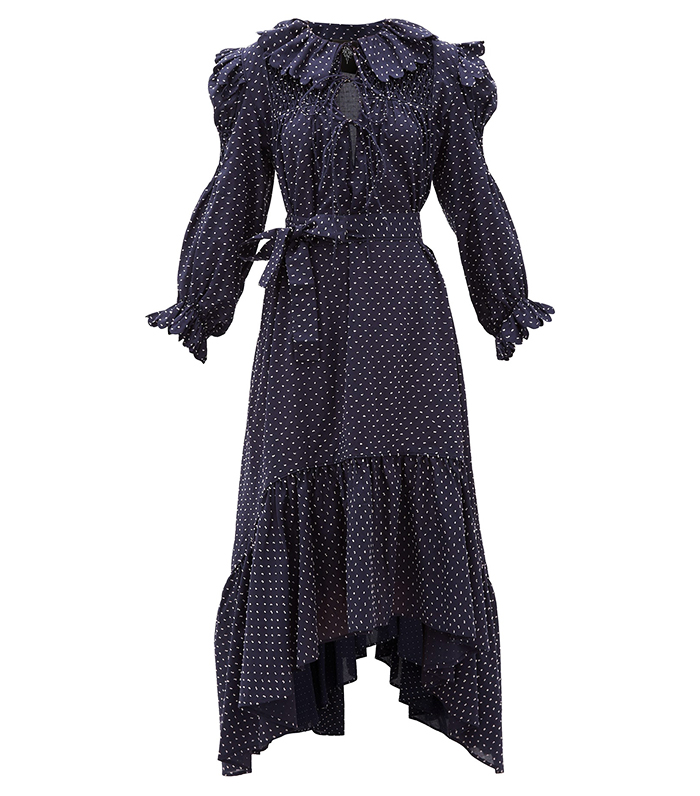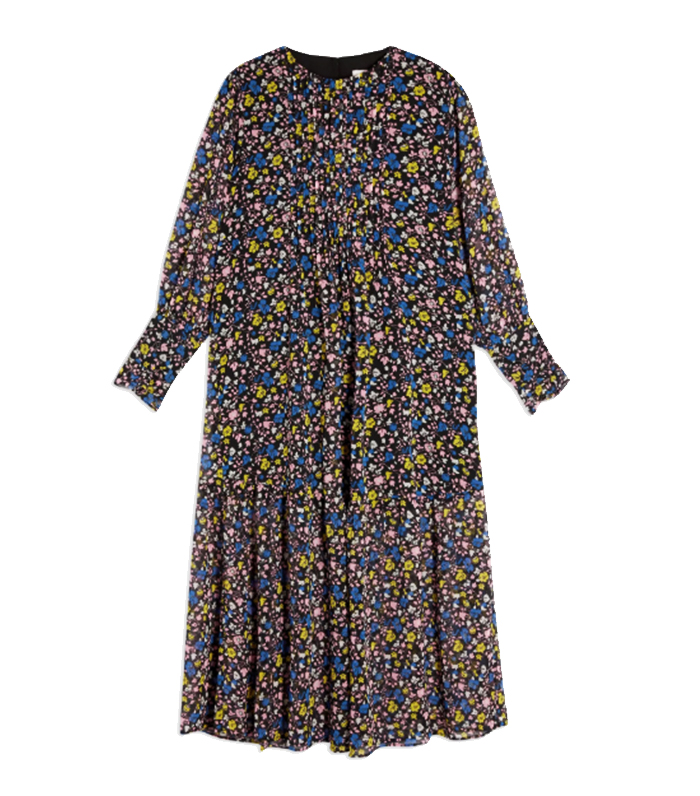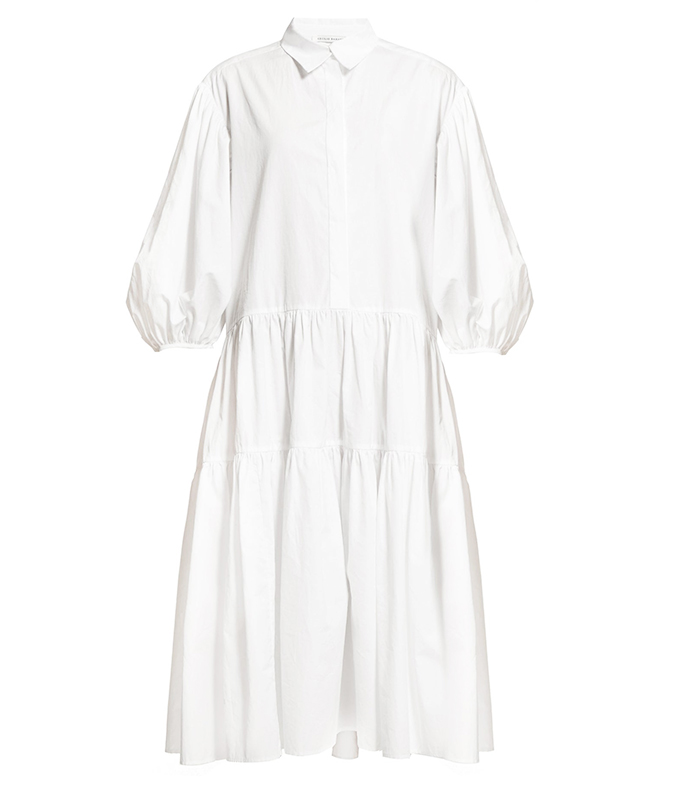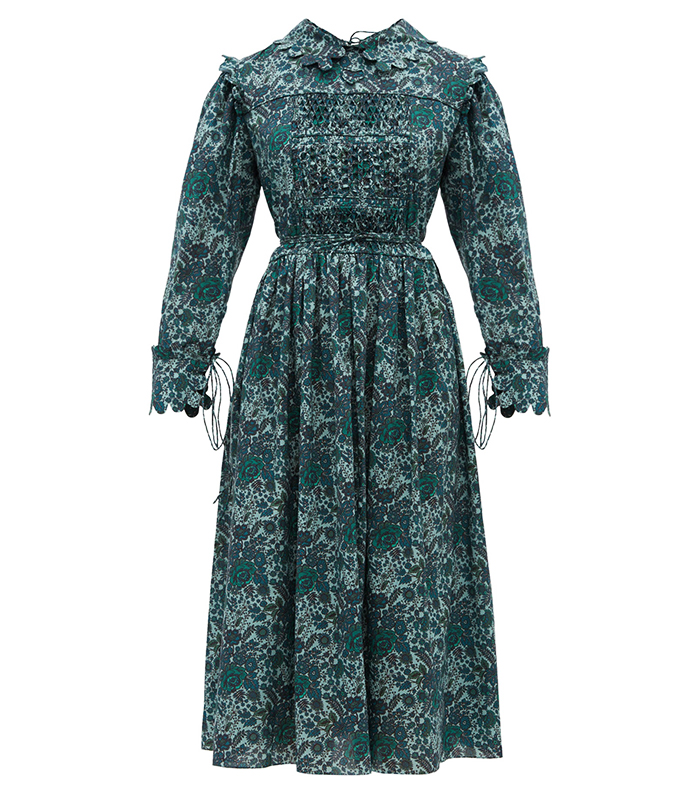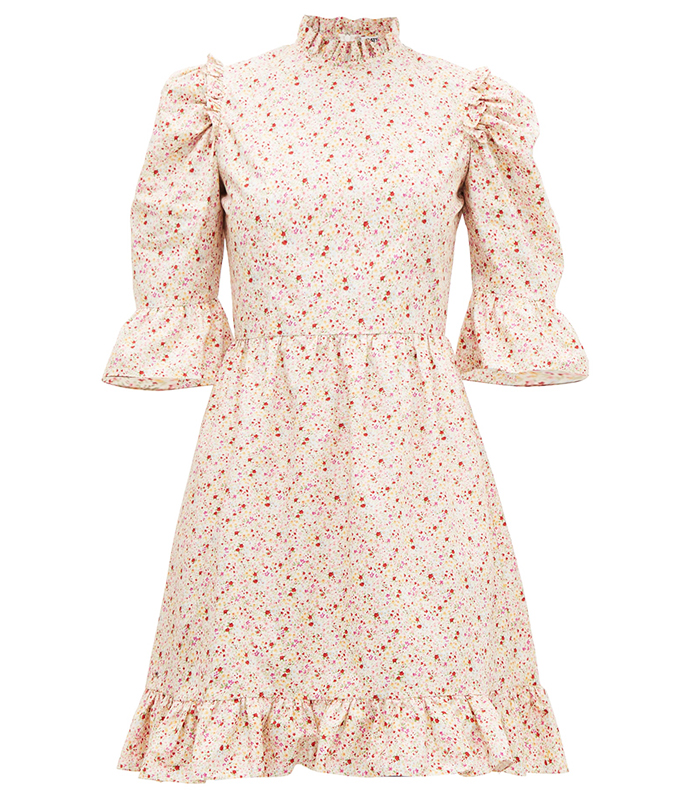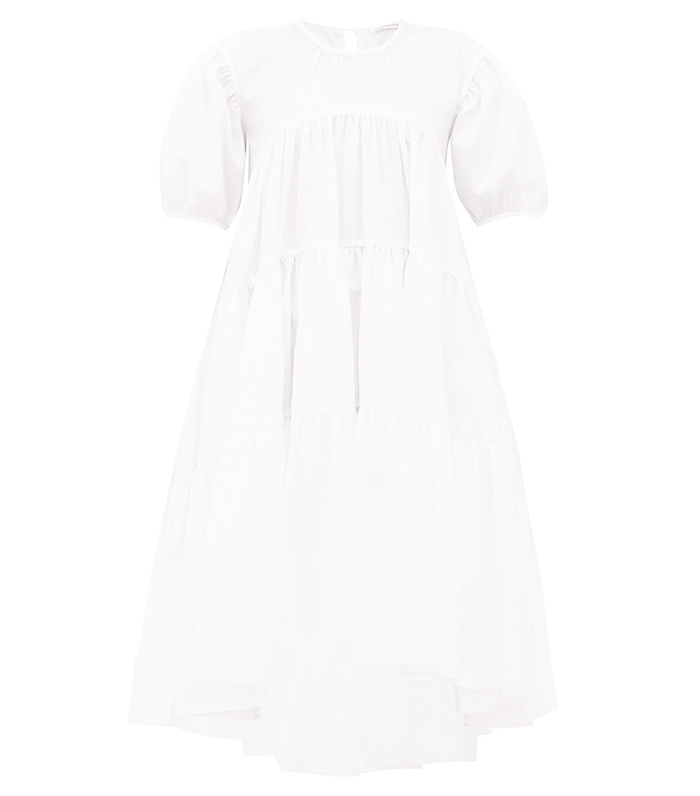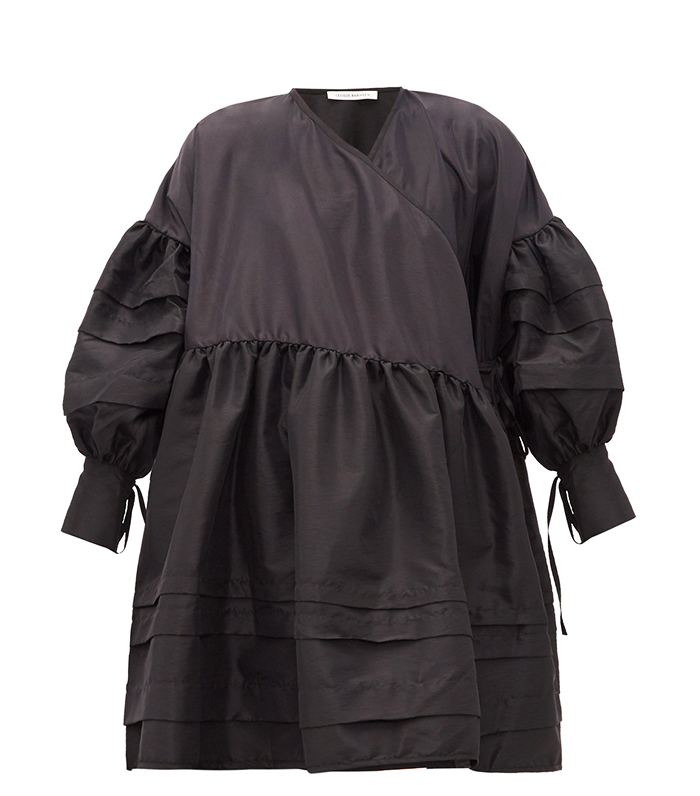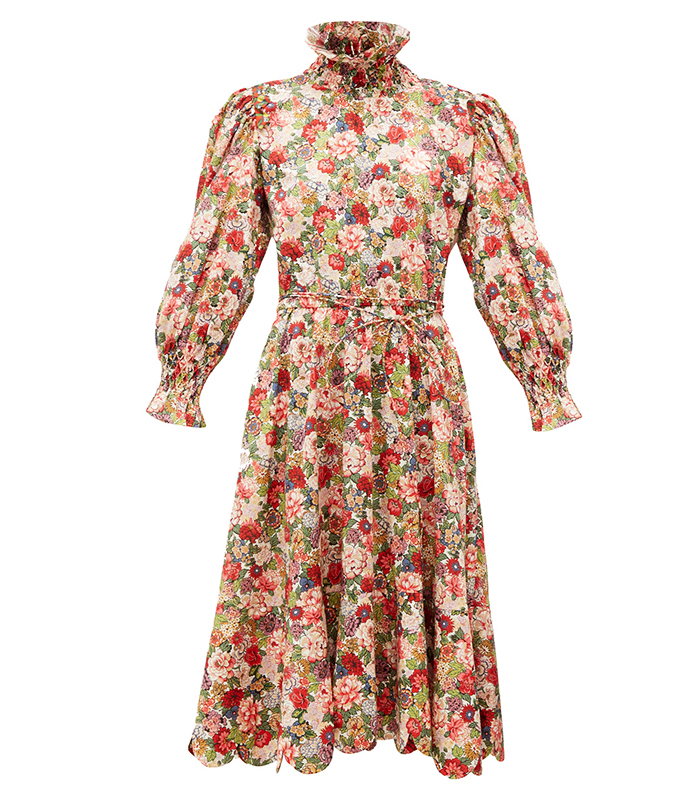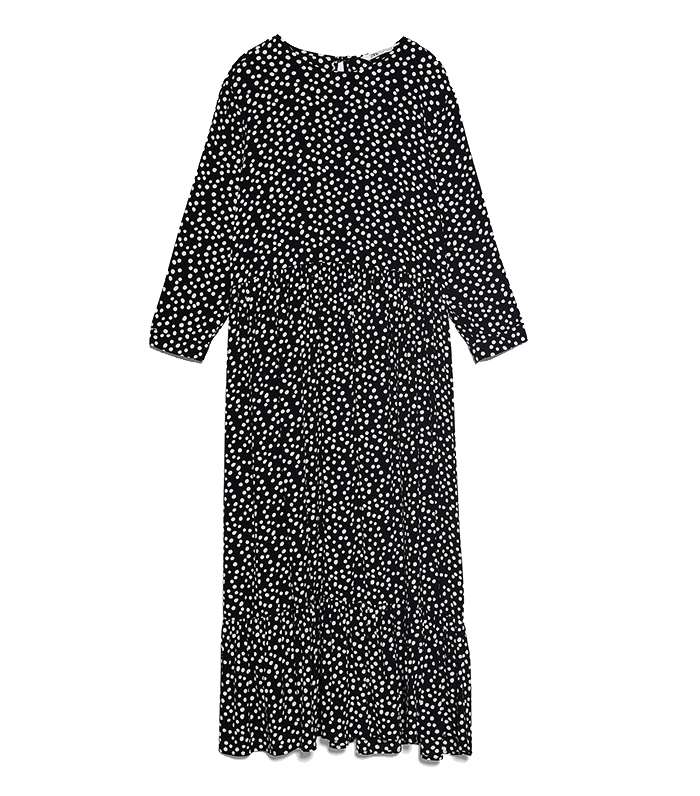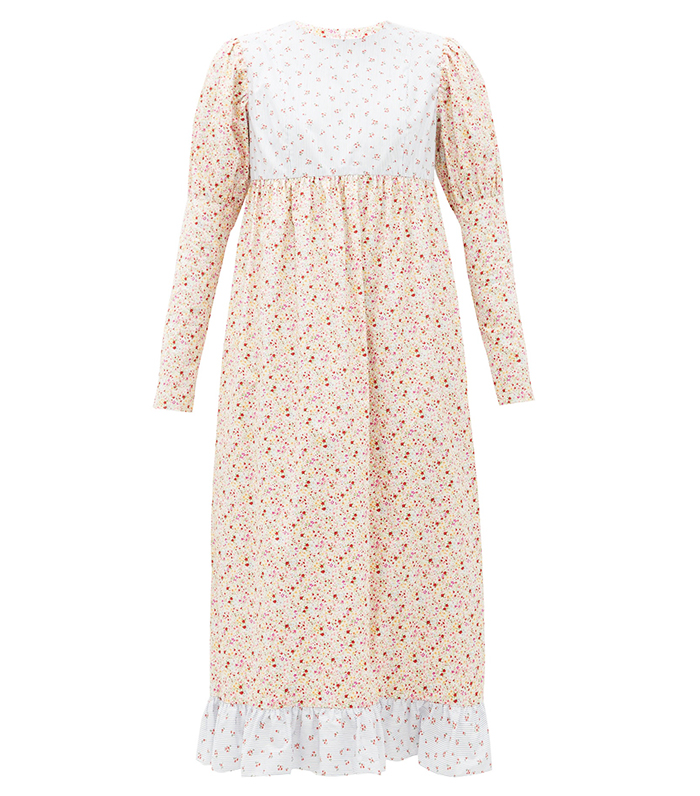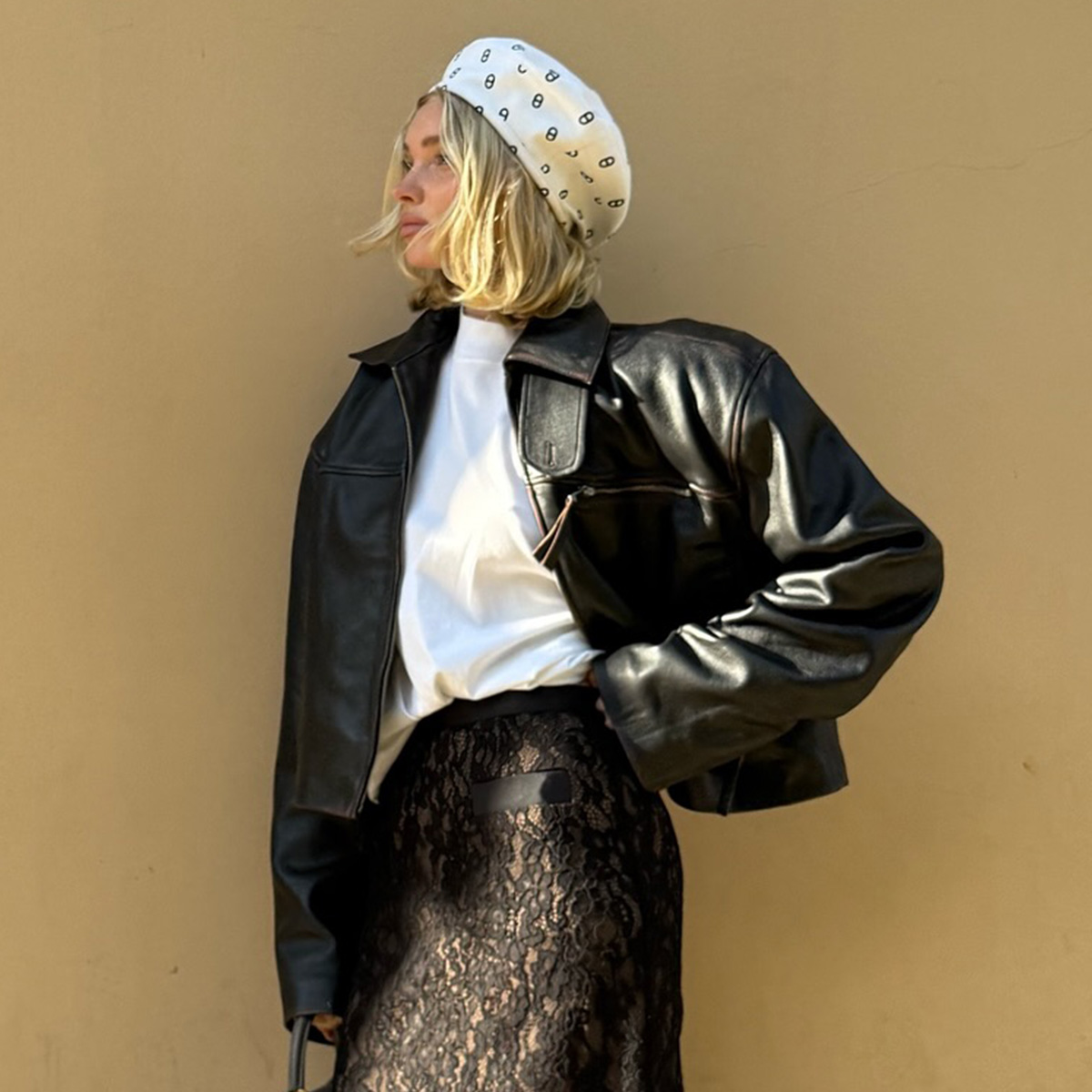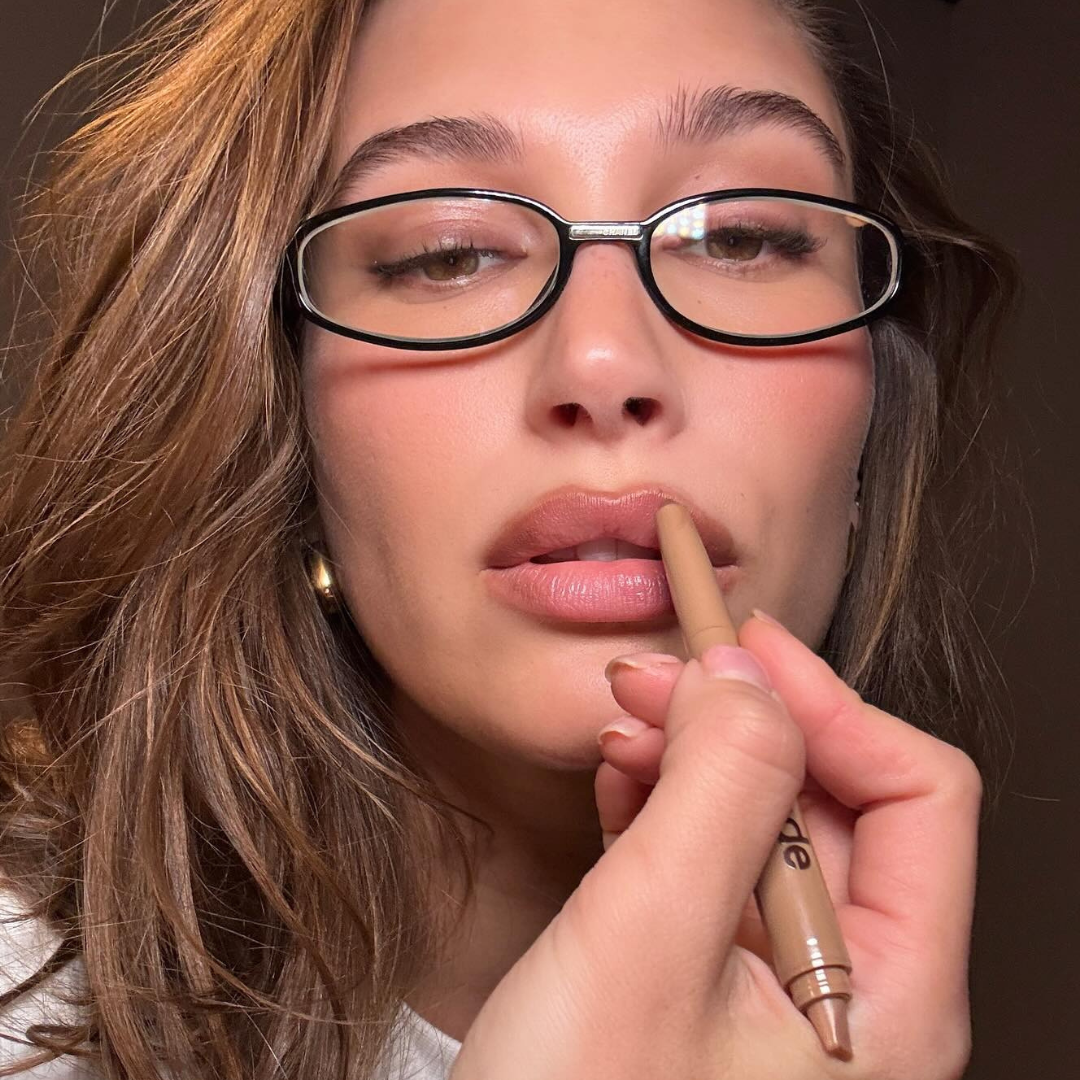Why 2019 Was the Year That Fashion Reclaimed the Word "Frumpy"
Around a month ago, I was in the changing rooms at Marks and Spencer's Regent Street store, trying on a long, floral-print smock dress. I stepped out of my cubicle to inspect it in the communal mirrors when I spotted a woman, roughly in her 50s, giving me the once-over. She promptly informed me that I should not buy the dress, as it was, in her opinion, "far too frumpy.” While she meant no real offence, it still struck me at that moment how outdated the term "frumpy” feels. In a similar way to "spinster” and "old maid,” the word "frumpy” is one of those gender-specific terms that summons images of older women dressed in drab, unfashionable clothing. I can’t think of a male equivalent. Yet, there I was, a 28-year-old fashion editor trying on a dress that could hardly be considered figure-enhancing or typically "flattering,” and you know what? I couldn’t have been more content.
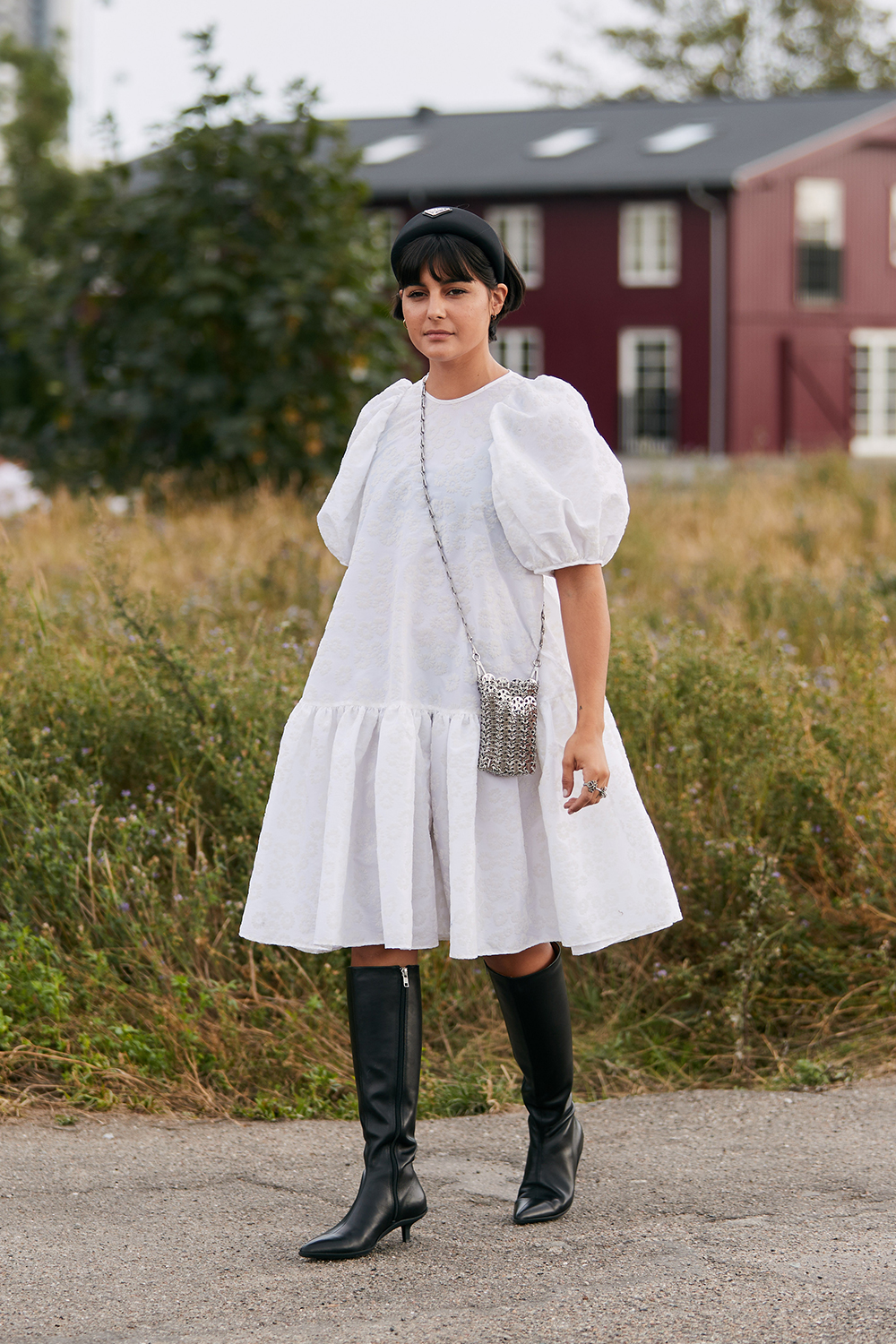
Be it voluminous silhouettes, pie-crust collars, calf-grazing hemlines or full-length sleeves, contrary to what changing-room lady might say, the "frumpy” frock has never looked cooler.
Whether it’s sashaying down red carpets, hitting the runways of Alexander McQueen and Erdem or in the prairie dress stylings of Greta Gerwig’s Little Women, 2019 has been a celebration of the power of prude. "What does frumpy mean? Dull, not sexy, not modern, not young, not new… This word, like many other derogatory terms for women, is ageist as well as sexist,” explains Professor Carolyn Mair, PhD and author of Psychology of Fashion. "Fashion used to dictate trends and consumers followed, but this has changed over recent years, and now, consumers are showing the fashion industry what they want. Women are deciding for themselves what is attractive and what is flattering.”
Thanks to Instagram and the dramatic growth of online shopping, fashion is finally being placed into the hands of the consumer, and this is changing the way that brands are approaching their designs. Just look at Zara’s polka-dot dress—a phenomenon that saw a humble spotted midi going viral over a matter of weeks. It garnered a cult following and consequently claimed its own Instagram account @hot4thespot (you couldn’t walk down the street without passing at least three polka-dot–clad women). With its baggy fit, longer hemline and high neckline, I doubt many would’ve singled out this dress for mass commercial success, yet it was wholly embraced by the shopping public, and most importantly, worn by a wide range of people of varying ages and body shapes.
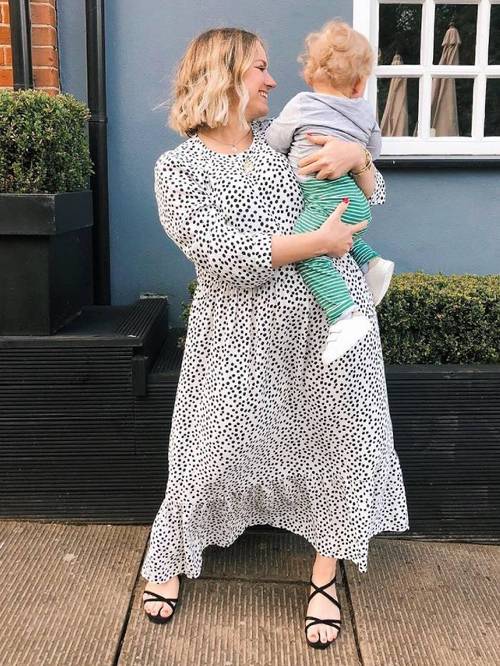
Hannah Gale wearing Zara’s polka-dot dress.
"The great thing about the Zara dress (the thing that seems to irk so many fashion experts) is that everyone, no matter their shape or size, looks exactly the same in it: like a jolly, spotty tent,” journalist Bryony Gordon argued in her weekly Telegraph column. "One writer said that the dress made wearers look, depending on their age, either pregnant or like Ann Widdecombe. And here we come to the nub of the snobbery: an astonishment that women would buy a frock based on how comfortable it makes them feel, rather than how attractive it makes them look.”
Bryony gets to the heart of the issue: If "frumpy” was historically used as a term used to dismiss women of a certain age and warn young women against—God forbid—wearing anything that could be considered "unflattering,” this trend turns the focus away from the external (and often male) gaze, and in a wider sense, allows the consumer to explore new narratives around why we dress and who we dress for.
After all, why must youth be synonymous with beauty and ageing with a lack thereof? And why should we feel obliged to conform to a singular view of what is attractive?
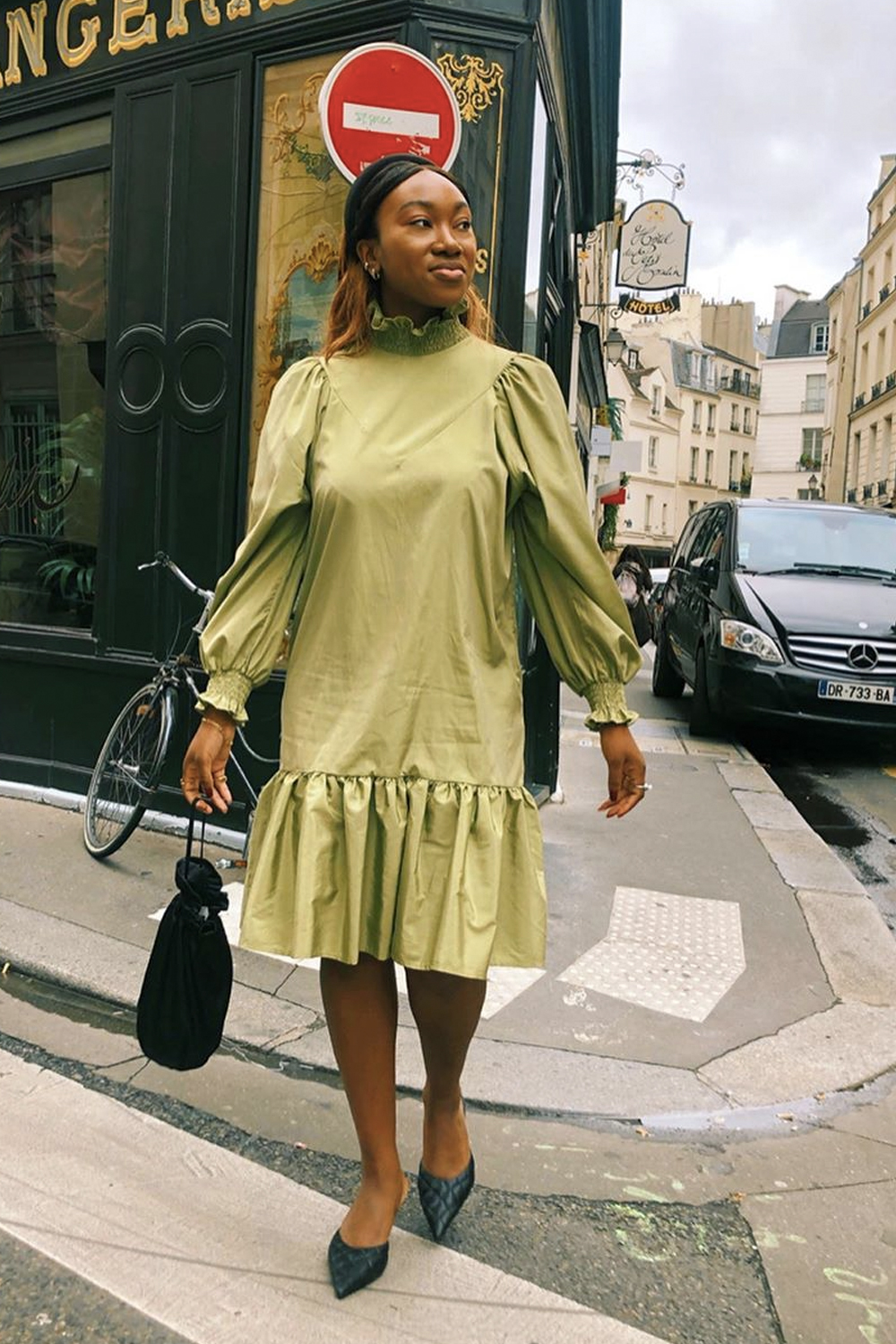
While the "frumpy” frock might’ve hit a headlining crescendo this summer with the Zara polka-dot dress, the trend has, in the longer term, been securing its position within the fashion canon thanks to a number of innovative up-and-coming designers.
"Horror Vacui was one of our Innovators for S/S 18, and we launched Batsheva in May 2018. They were both instant hits with our customers, as they have taken on this specific style in a very modern way,” says Cassie Smart, head of womenswear at MatchesFashion. "The look is very versatile, and for many of our customers, this demure style of dressing is an elegant way to be sexy as its less obvious than body-conscious styles, but the silhouette is also very flattering.”
Scandi designer Cecilie Bahnsen is one of 2019’s biggest success stories when it comes to the smock dress stakes, with her whimsical, nightie-style designs. "With dresses, I always look for ways of concealing and revealing a woman’s body, wrapping and enveloping, looking at sensuality and femininity, finding new ways to interpret this,” explains Bahnsen. "Women are taking a more relaxed and effortless approach to fashion. They feel the need to be comfortable. With one of our dresses, you can wear it to a party and then throw it on when Monday comes around just because that’s what you want to wear.”
If the hourglass silhouette reflected the traditionalism of the ’50s and the miniskirt the sexual liberation of the ���60s, then perhaps the "frumpy” smock is our own addition to the fashion history books. A dress that signifies a shift in women dictating what they want to wear, and disregards one of the insults often thrown at us over the past century. "What is attractive or flattering is subjective, and even when we feel we are looking our best, our observers might think differently. The interesting thing is that when we believe we look good we feel more confident.” Mair says.
The rise of the frumpy dress doesn’t mean that judgement is then passed onto those who choose to wear more figure-hugging fits (believe it or not, you can be a feminist and love body-con). I, for one, want to be able to stand in a changing room in an unshapely dress or a garish print that everyone else except me might hate, confident in the knowledge that the people around me just won’t give a damn.
Shop Our Frumpy-Dress Edit
Up Next: Spring/Summer 2020 Trends: The Only New Fashion Looks You Need to Know
